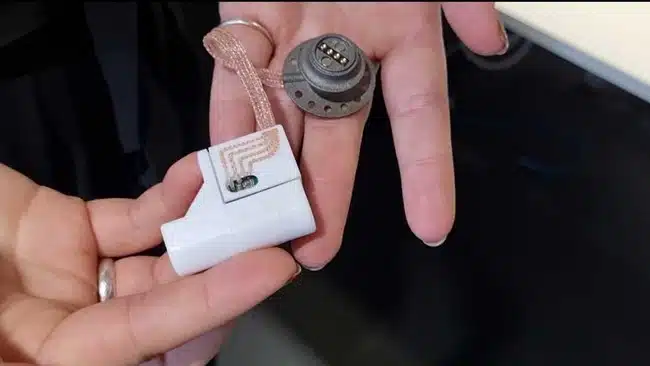A surgically implanted electronic device could restore blinking to those who can’t
Researchers from the University of Sydney have created a device that can restore the ability to blink in people with facial paralysis, solving a medical as well as a social problem.
The Bionic Lid Implant for Natural Closure (BLINC) is an implant which actively closes the eyelid. The smart electronics detect when the individual will blink on their healthy side, triggering the device to blink for the paralysed eye.
“The implant creates a blink by physically pulling down the eyelid”, Jacinta Cleary, a PhD Candidate, School of Biomedical Engineering, University of Sydney, whose team developed the device.
“When a blink is detected on the healthy side, a signal is sent to the electronics which creates a magnetic field. This wirelessly interacts with the internal magnet to pull on a sling implanted in the eyelid, which in turn pushes down on the eyelid to close the eye. Facial nerve paralysis only prevents eye closure, so the eye then reopens naturally.”
We blink to protect our eyes – to keep them lubricated and to avoid hazards. If blinking is disrupted long-term, the eye will dry out and become irritated, and without meticulous care, can become permanently damaged, resulting in blindness.
But the problems go beyond the medical. Our eyes also communicate who we are, and our expressions are an important part of how we are perceived by society. When facial symmetry is disrupted, it is very noticeable, leading to stares and intrusive questions from the wider community, and those with this condition tend to isolate themselves to avoid this.
The focus of BLINC is to both restore a complete blink for improved eye health, as well as producing a natural and synchronous eye movement so the individual can overcome social awkwardness, which has not been adequately addressed by current interventions.

“The device triggers a blink in response to the body’s signals, then the natural mechanisms reopen the eye. By listening to the body the device is able to integrate seamlessly, resulting in a more natural blink while effectively distributing moisture across the eye to maintain eye health,” says Jacinta.
She and her team are currently trialling the device and hope to see it in clinical trials in the next five to 10 years.
Facial nerve paralysis is caused by damage to the facial nerve and results in loss of movement on one side of the face.
Some illnesses, such as Bell’s Palsy, can result in permanent facial paralysis, trauma to the face can damage the nerves, and removal of tumours can damage the underlying structures. The most significant impact of this paralysis, is the loss of blinking.
The results from this study will bring reseachers one step closer to restoring blinking in facial paralysis and allowing afflicted individuals to return to normal life.





 Fresh Science is on hold for 2022. We will be back in 2023.
Fresh Science is on hold for 2022. We will be back in 2023.